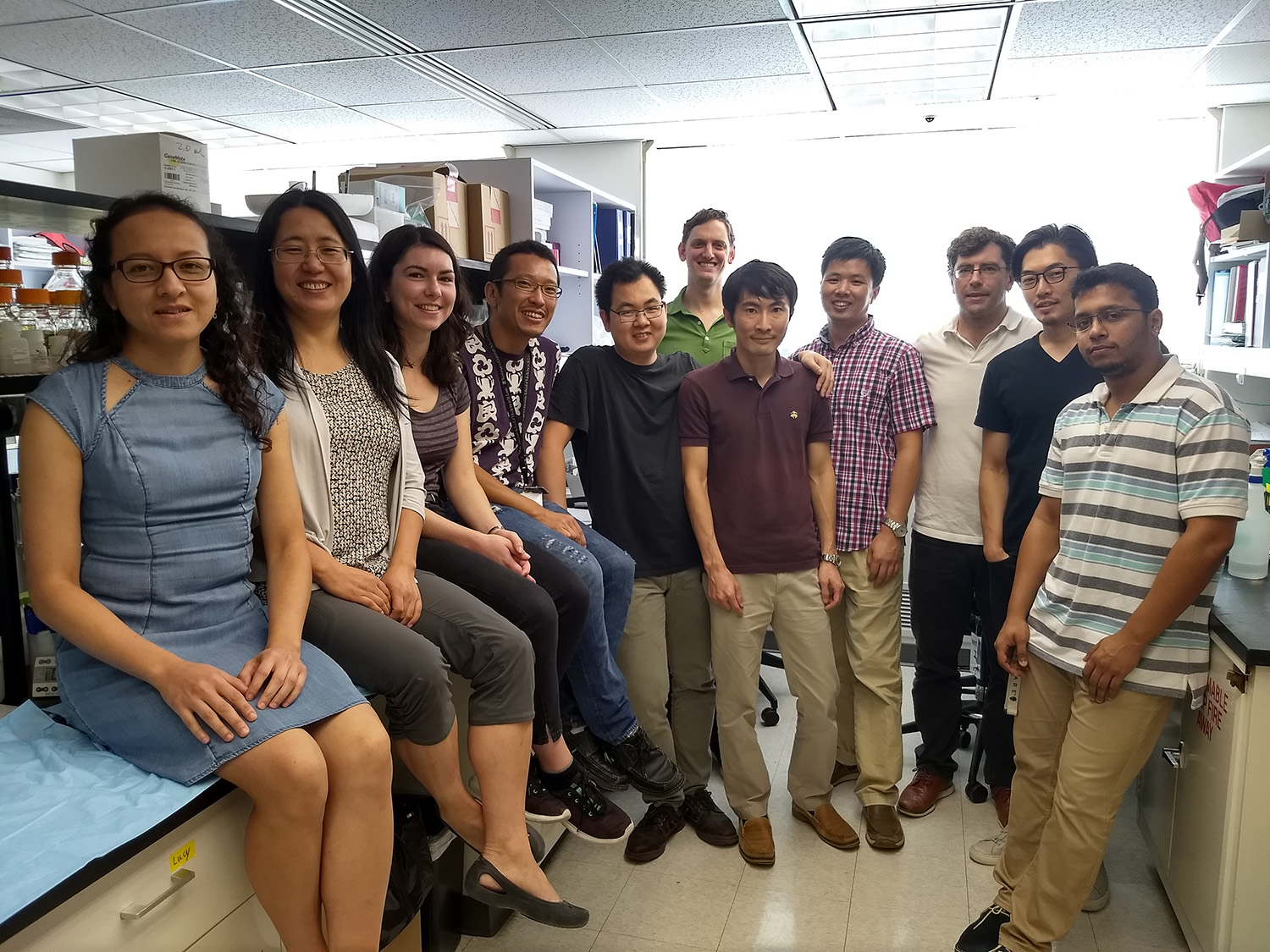Researchers in the Division of Nephrology are using a state-of-the-art technique called single-cell RNA-sequencing (scRNA-seq) to take kidney biopsy interpretation to a whole new level. Their study, recently published in JASN, presents the first scRNA-seq analysis of a human kidney allograft biopsy.

Dr. Haojia Wu
Instructor of Medicine Haojia Wu, PhD, and Assistant Professor of Medicine Andrew Malone, MB, BCh, are co-first authors of the article Single-Cell Transcriptomics of a Human Kidney Allograft Biopsy Specimen Defines a Diverse Inflammatory Response, which was highlighted on the cover of the JASN August 2018 issue.
The kidney is a highly complex organ composed of specialized cell types with unique functional roles. This complexity is further increased in the setting of rejection when many immune cell types infiltrate the kidney. While the traditional analysis of a kidney biopsy provides an incredible amount of diagnostic and prognostic information to clinicians, scRNA-seq allows for the characterization of each individual cell in the biopsy specimen. With scRNA-seq, it is possible to measure the expression of thousands of genes in thousands of single cells from a biopsy core rapidly, simultaneously, and quantitatively.
“We used a high-throughput single-cell RNA-seq platform, called InDrops, to generate single cell transcriptomes from a 1-centimeter long biopsy,” says Dr. Wu. “This technology allows us to observe how individual cells differ from each other in their responses to the environmental changes during transplant kidney rejection.”
From the allograft biopsy core analyzed in this study, sixteen different cell types were described. Furthermore, novel endothelium cell states were found. On average, 827 unique genes per cell in over 4400 cells were detected. Proinflammatory parenchymal responses were identified in the allograft when compared to a healthy adult kidney. The study also mapped genes previously described in rejecting biopsies and associated with poor outcomes to their cells of origin. This adds to the current understanding of the role individual cells play in allograft rejection.

Dr. Andrew Malone
Overall, the investigation showed that it was feasible to apply scRNA-seq to single 16G human kidney biopsy cores and identify complex immune and inflammatory responses. The data are available as a searchable resource for the scientific community.
“This study demonstrates the power of this technology when applied to the study of late allograft rejection, a common and difficult to treat clinical issue,” says Dr. Malone.
Authors of the published article are Haojia Wu, Andrew F. Malone, Erinn L. Donnelly, Yuhei Kirita, Kohei Uchimura, Sai M. Ramakrishnan, Joseph P. Gaut and Benjamin D. Humphreys.

Members of The Humphreys’ Lab.